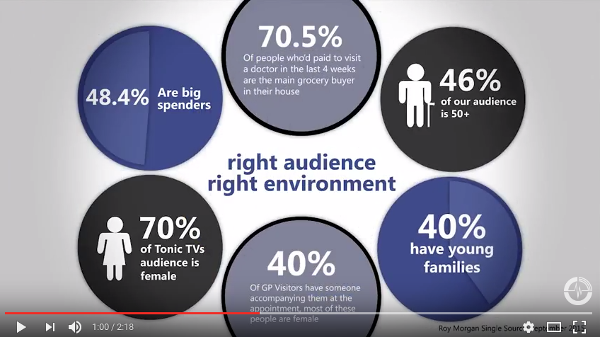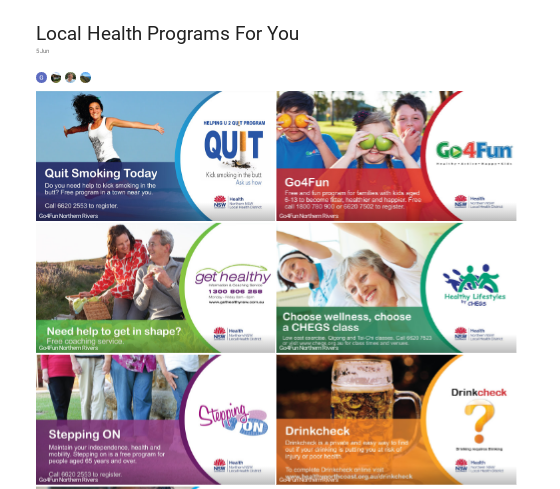Tonic TV's Target Audence
"We waiting, waiting, waiting" bemoaned Con the Fruiterer 20 years ago and we are still waiting. How long will it take to see Doctor Smith? "Coupla days" but see Dr Jones today, "Doesn't madda".
When you get to the surgery you check in and sit down in the "waiting" room. Thankfully things have improved significantly since Con's time. You no longer have to read the out of date magazines or stare vacantly into space. You've got "The Girl on the Train" on your Kindle or Candy Crush on the phone. Alternatively, you can even read your email on the iPad if you've got a good 4G connection or connect to the surgery's free wifi.
The soapies are still playing in some waiting rooms but increasingly surgery TVs are displaying health messages to their captive audience. Two commercial companies vie for dominance in this marketplace.
Medical Channel describes itself as Australia's Leading Waiting Room Network "bringing quality medical content to its screens". With an audience reach of over 6.3 million people per month it is Australia's fastest growing network. Its sponsors include alternative medicine providers, drug and pathology companies, State and Federal Departments of Health and the RACGP. The channel displays health messages intermixed with current news headlines and lighter items like quick quizzes.
The rival is TonicOnDemand from Tonic Health Media (THM). One of its founders is Australian medical media commentator and presenter, Dr Norman Swan. TonicOnDemand targets the same type of sponsors and claims a larger reach of 10 million people per month, nearly half the Australian population. THM also provides pamphlets and brochures to supplement their TV messages. It aims to "improve health literacy and patient self management by driving evidence-based practice for better outcomes". It differs from Medical Channel in that it also offers sound capability with its videos.
Both companies allow health messages from the practice to be included in their ad rotations and neither charges practices for their services or the equipment.
The new technologies that underpin TV on Demand also enable other approaches. If you want more customised messages for your patients you can do it yourself. Practice specific information and branding can be supplemented by messages about local services that the practice may wish to promote. It is not free but the cost of a large screen display is readily affordable. It is a little more work than signing up with the commercial offerings but not a lot, particularly if you partner with compatible local organisations.
MyGP TV use Google Chromecast devices that retail for under $60. Plugging one into the spare HDMI port of your TV allows you to display a slideshow from your photos folders in Google, Facebook or Flickr. The images are drawn down over your wifi and internet connections. You can display not only your own images but also those from other organisations who have shared their image folders with you.
One such local organisation is the Northern NSW Health Promotion Unit (HPU). They run programs in alcohol reduction, smoking cessation and exercise programs for various age groups. As described elsewhere in this issue advertising the HPU's programs in GPs' waiting rooms is an ideal way to raise awareness of their programs in their target audience.
Northern Rivers medical and allied health practitioners needing help in implementing their own TV content can contact






